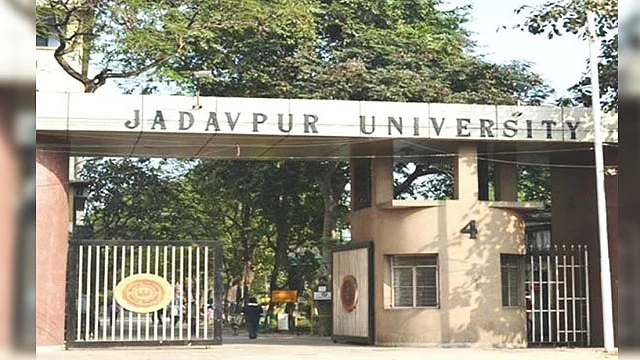A hostel death: The dark side of ragging to the fore again?
The mysterious death of a Jadavpur University student shows that malaise can go far beyond the perception of innocent fun and its trivialisation by Bollywood at times

Name: Swapnadeep Kundu
Age: 18 years
College: BA Bengali (Honours), 1st year, Jadavpur University
Cause of death: Injuries after falling from the second floor
The case has taken Kolkata by storm, bringing to light the dark side of ragging in Indian colleges which is alleged to have caused the death. It was on Wednesday, August 9, night that the teenager, who had only moved to the Main Hostel from his suburban home last Sunday — a few minutes walk from the campus — fell mysteriously from the second floor of the building and was found in a naked and unconscious state.
Swapnadeep, who was then rushed to a nearby private hospital by fellow boarders with multiple injuries, succumbed in the early hours of Thursday.
As the grief-stricken family are trying to come to terms with the terrible loss, they pointed a finger at the ragging culture prevalent in the hostel as the cause of his death. Swapnadeep’s uncle went on record before media that the youngster pleaded with his mother to take him home in a phone call a few hours before the accident, saying he was afraid and had ‘lots to say.’
The incident has laid bare the divide among the students’ community of the university, with a section of senior students calling him ‘mentally unstable’ while others — including students who have moved out to PG accommodations in different parts of the city and some alumni — blaming it on an often brutal ragging culture in the hostel.
The university authorities have now decided to move the freshers to available hostel berths inside the campus — a decision to diffuse the crisis arising from Swapnaneel’s unnatural death but also a tacit admission that hostels with seniors are not exactly deemed as safe for newcomers.
The problem lies historically with the somewhat indulgent acceptance of the practice of ragging — often seen as a toughening-up process and the first step of a future bonding between generations of students. Think of some of the biggest Hindi film hits like ‘3 Idiots or ‘Chhichhore’, where displays of innocent boys’ fun were glorified and lapped up by the audience.
No problems with that, but who draws the line as things go overboard often, often causing nervous breakdowns, withdrawal from hostel and in worst cases, a criminal loss of lives? Just ponder this, India recorded a new high of 12,526 student suicides in 2020 alone, according to data compiled by the National Crime Record Bureau (NCRB), a 21 per cent rise since 2019.
In a span of 10 years between January 1, 2013, to April 30, 2022, the highest number of ragging complaints received were from Uttar Pradesh — 832 — according to figures released by the anti-ragging cell of the University Grants Commission (UGC). Madhya Pradesh had recorded the second highest number of cases of ragging at 666.
It’s been quite a challenge at the hands of UGC, which introduced guidelines to curb the menace in higher educational institutions in 2009 and then amended it 2016, whereby ragging may include any act of physical or mental abuse (including bullying and exclusion) targeted at another student (fresher or otherwise) on the ground of colour, race, religion, caste, ethnicity, gender, sexual orientation, appearance, nationality, regional origins, linguistic identity, place of birth, place of residence or economic background.
Despite the Supreme Court ordered notification of anti-ragging regulations and the formation of anti-ragging committees in every higher educational institution, the practice is far from eliminated, feel all sections of the community. The actual number of such incidents may often go under-reported as junior students don't complain about ragging due to fear of tarnishing their social image or being isolated in the institution.
A look at the punishment provisions laid down by UGC shows they lack the severity needed — debarring from appearing in any sessional test/university exam or withholding of results; suspension from attending classes and academic privileges; withdrawing scholarships; suspension for a month or at an extreme case: suspension/expulsion from the hostel.
Such punishments, at best, are suited for errant students but unless ragging is seen as a cognisable offence that warrants police arrest, it’s difficult to see a long-term remedy. If Swapnadeep’s case serves as an eye-opener, then it may help the students’ cause in future.
Otherwise, ragging will continue to be treated as a rite of passage for those stepping onto the doors of higher education — albeit with its perils!
Follow us on: Facebook, Twitter, Google News, Instagram
Join our official telegram channel (@nationalherald) and stay updated with the latest headlines
